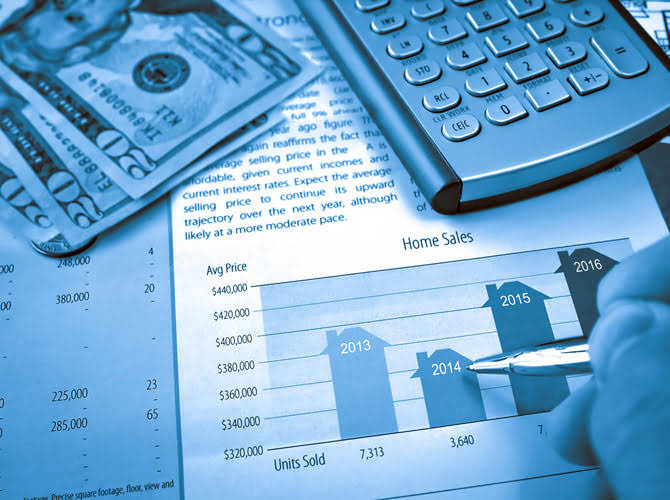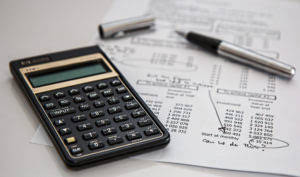
When a company issues additional stock shares for any reason, the result is stock dilution. More shares in circulation means a reduction in the earnings per share (EPS) of the existing shares, and in the ownership percentage held by each current shareholder. In this scenario, these three stocks average a yield of 6.66%, which would mean investors would need to invest just over $90,135 to earn $6,000 per year in dividends or a monthly average of $500.
How Often Are Dividends Distributed to Shareholders?
Essentially, this ratio tells you how much of a company’s profits it pays out in dividends per year. Dividend reinvestment plans (DRIPs) are commonly offered by individual companies and mutual funds. Shareholders or investors looking to calculate the dividend that a company has paid in the past can use different methods to calculate it.
What is your risk tolerance?
You can choose to accept the dividend payment as cash in your brokerage account, or reinvest the dividend into your portfolio to purchase more of the stock. However, the tax treatment of dividends can vary depending on a variety of factors, including the type of account in which the dividend-paying stocks are held and the investor’s personal tax situation. This is often the case with young or rapidly growing companies that opt to reinvest their profits back into the business.
Do Dividends Go on the Balance Sheet?
- Companies are not required to issue dividends on common shares of stock, though many pride themselves on paying consistent or constantly increasing dividends each year.
- A dividend’s value is determined on a per-share basis and is to be paid equally to all shareholders of the same class (common, preferred, etc.).
- Essentially, this ratio tells you how much of a company’s profits it pays out in dividends per year.
- However, it does lower the Equity Value of the business by the value of the dividend that’s paid out.
- Nancy Mann Jackson is an award-winning journalist who specializes in writing about personal finance, real estate, business and other topics.
- You should not invest any money you cannot afford to lose, and you should not rely on any dividend income to meet your living expenses.
In addition to dividend yield, another important performance measure to assess the returns generated from a particular investment is the total return factor. This figure accounts for interest, dividends, and increases in share price, among other capital gains. When paid, the stock dividend amount reduces retained earnings and increases the common stock account. Stock dividends do not change the asset side of the balance sheet—only reallocates retained earnings to common stock. One of Warren Buffett’s favorite stocks to buy since the start of 2022, integrated oil and gas stock Occidental Petroleum (OXY -0.12%), is Berkshire’s second-most-important dividend stock. The roughly 255.3 million shares of common stock owned will generate in the neighborhood of $224.6 million in annual dividend income.

Advisors say one of the quickest ways to measure a dividend’s safety is to check its payout ratio, or the portion of its net income that goes toward dividend payments. If a company pays out 100% or more of its income, the dividend could be in trouble. During tougher times, earnings might dip too low to cover dividends. Like the dividends account is a stock’s dividend yield, the company’s payout ratio will be listed on financial or online broker websites. While cash dividends have a straightforward effect on the balance sheet, the issuance of stock dividends is slightly more complicated. Stock dividends are sometimes referred to as bonus shares or a bonus issue.

What is your current financial priority?
As a result, double taxation of dividend income might be frightening if you consider a portfolio of foreign equities. Moreover, during economic contractions, these companies continue to pay high yields. On the other hand, all investors receive the exact yield for each share. Of course, big money players like Warren Buffett may buy $5 billion in Goldman Sachs with a 10% yield and warrants to acquire a few billion more at an even lower rate.

Shares purchased on or after this date do not give the buyer the right to receive the most recently declared dividend. Shareholders who are registered owners of the company’s stock on this date will be paid the dividend. Once a dividend is announced on the declaration date, the company has a legal responsibility to pay it. Dividends are not assets as they are not a resource that a company owns or controls. Finally, dividends are not expenses either, as they are do not represent an outflow of economic benefits during a period and are also not a part of the Statement of Profit or Loss of a company. A financial professional will offer guidance based on the information provided and offer a no-obligation call to better understand your situation.
Create a Free Account and Ask Any Financial Question
- The company’s management may have a plan for investing the money in a high-return project that could magnify returns for shareholders in the long run.
- In other words, if you invest $10/share today, that is a fixed cost while the return from the investment (dividends) continues to grow.
- They also are a reward for holding the stock rather than selling it.
- Below is an example from General Electric’s (GE)’s 2017 financial statements.
- Stock dividends do not result in asset changes to the balance sheet but rather affect only the equity side by reallocating part of the retained earnings to the common stock account.
- They may have other tax implications, and may not provide the same, or any, regulatory protection.
- The most common type of dividend is a cash dividend, but companies may pay other types of dividends, too.
All the while, the selling volume for its products is declining amid a wave of higher prices. There isn’t going to be an easy way for the company to reignite sustained interest in its brands. Although lengthy books have been written outlining the strategies Buffett uses to build wealth on Wall Street, his greatest advantage might be his love for dividend stocks. Seven core holdings account for the lion’s share of the dividend income Berkshire Hathaway is expected to collect over the next year. Acorns Checking Real-Time Round-Ups® invests small amounts of money from purchases made using an Acorns Checking account into the client’s Acorns Investment account. Requires both an active Acorns Checking account and an Acorns Investment account in good standing.
Any investment process that does not take into account currency strategy is likely to fail. Ask your investment advisor or financial planner what their current strategy is this week–you might be surprised by the response. This is why electricity stocks with high payout rates are bid up during economic uncertainty. Investors need to know if the tax break will continue due to the significant disparity. You are in good shape if you get a high yield (above 5%) and the payout ratio is low.
A 30% Discount on a Magnificent Dividend Stock You Don’t Want to Miss
Our writing and editorial staff are a team of experts holding advanced financial designations and have written for most major financial media publications. Our work has been directly cited by organizations including Entrepreneur, Business Insider, Investopedia, Forbes, CNBC, and many others. Our team of reviewers are established professionals with decades of experience in areas of personal finance and hold many advanced degrees and certifications.